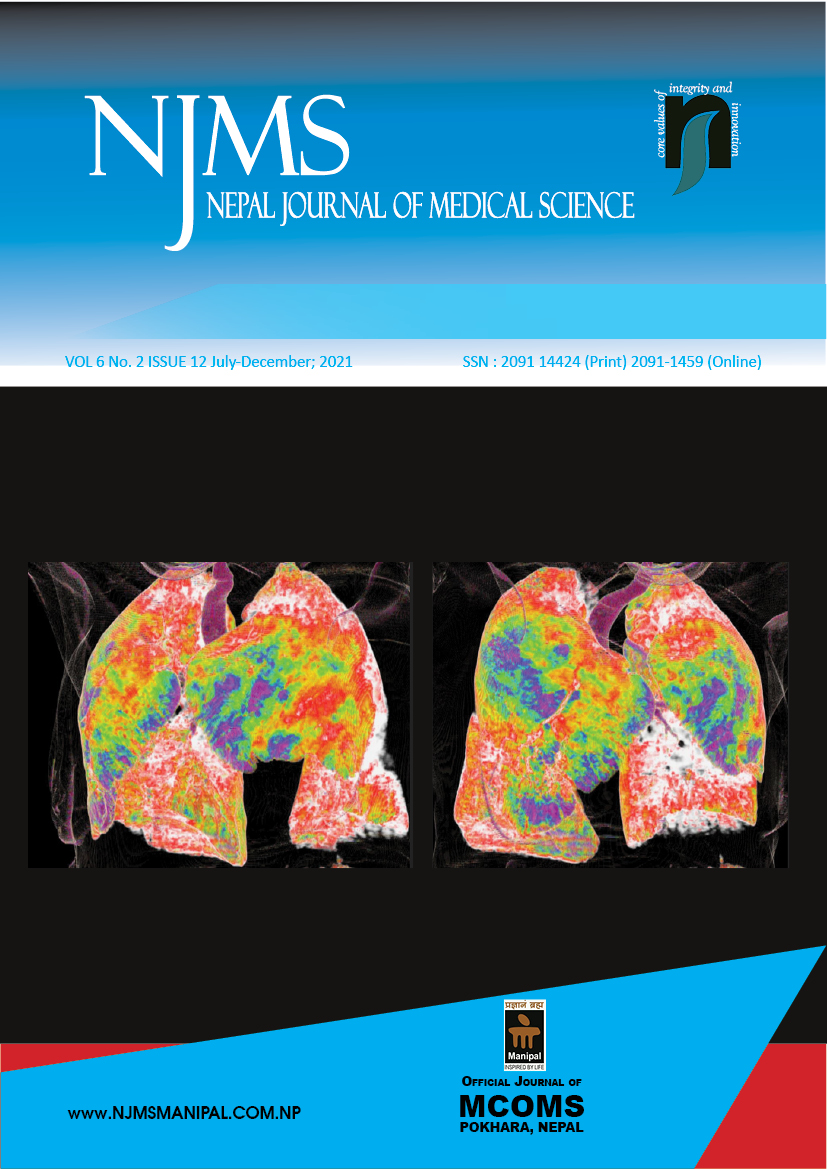Prevalence and Pregnancy Outcome of Preeclampsia Using International Society for the Study of Hypertension in Pregnancy 2018 Criteria in Comparison to 2001
DOI:
https://doi.org/10.3126/njms.v6i2.42234Keywords:
Preelampsia, Pregnancy Outcome, ProteinuriaAbstract
Introduction: Criteria of preeclampsia (PE) have evolved over years to increase the prediction of adverse pregnancy outcomes. Revised International Society for the Study of Hypertension in Pregnancy (ISSHP) 2018 criteria incorporates organ system dysfunction with or without proteinuria. This study aims to determine changes in prevalence and pregnancy outcome of PE diagnosed by revised criteria compared to traditional ones.
Methods: This was a cross-sectional study conducted in the department of Obstetrics and Gynecology from July to October 2021. Women with hypertensive disorders in pregnancy (HDP) were classified according to ISSHP 2001 and 2018 criteria to study the prevalence and pregnancy outcomes. Data were analyzed using Statistical Package for the Social Sciences version 21.
Results: There was an increase in the prevalence of PE applying ISSHP 2018 criteria (12.6% vs 4.6%). The proportion of cases of PE in HDP increased from 19.4% to 52.7%. Preterm delivery was more in the group diagnosed using old criteria compared to revised criteria (52% vs 33.8%). Maternal morbidity like operative delivery, severe hypertension, eclampsia, abruptio, intrauterine growth restriction, were more in women diagnosed only with proteinuria. Low birth weight, Apgar less than 7 at one and five minutes, perinatal morbidity and mortality, were also more in PE diagnosed using old criteria compared to revised criteria.
Conclusion: The prevalence of PE increased without changes in the pregnancy outcome when revised ISSHP 2018 criteria were applied over the traditional 2001.
Downloads
Downloads
Published
How to Cite
Issue
Section
License
Copyright (c) 2022 Nepal Journal of Medical Sciences

This work is licensed under a Creative Commons Attribution 4.0 International License.
Copyright © by Nepal Journal of Medical Sciences. The ideas and opinions expressed by authors of articles summarized, quoted, or published in full text in this Journal represents only opinions of authors and do not necessarily reflect the official policy of Nepal Journal of Medical Sciences or the institute with which the author(s) is (are) affiliated, unless so specified.




